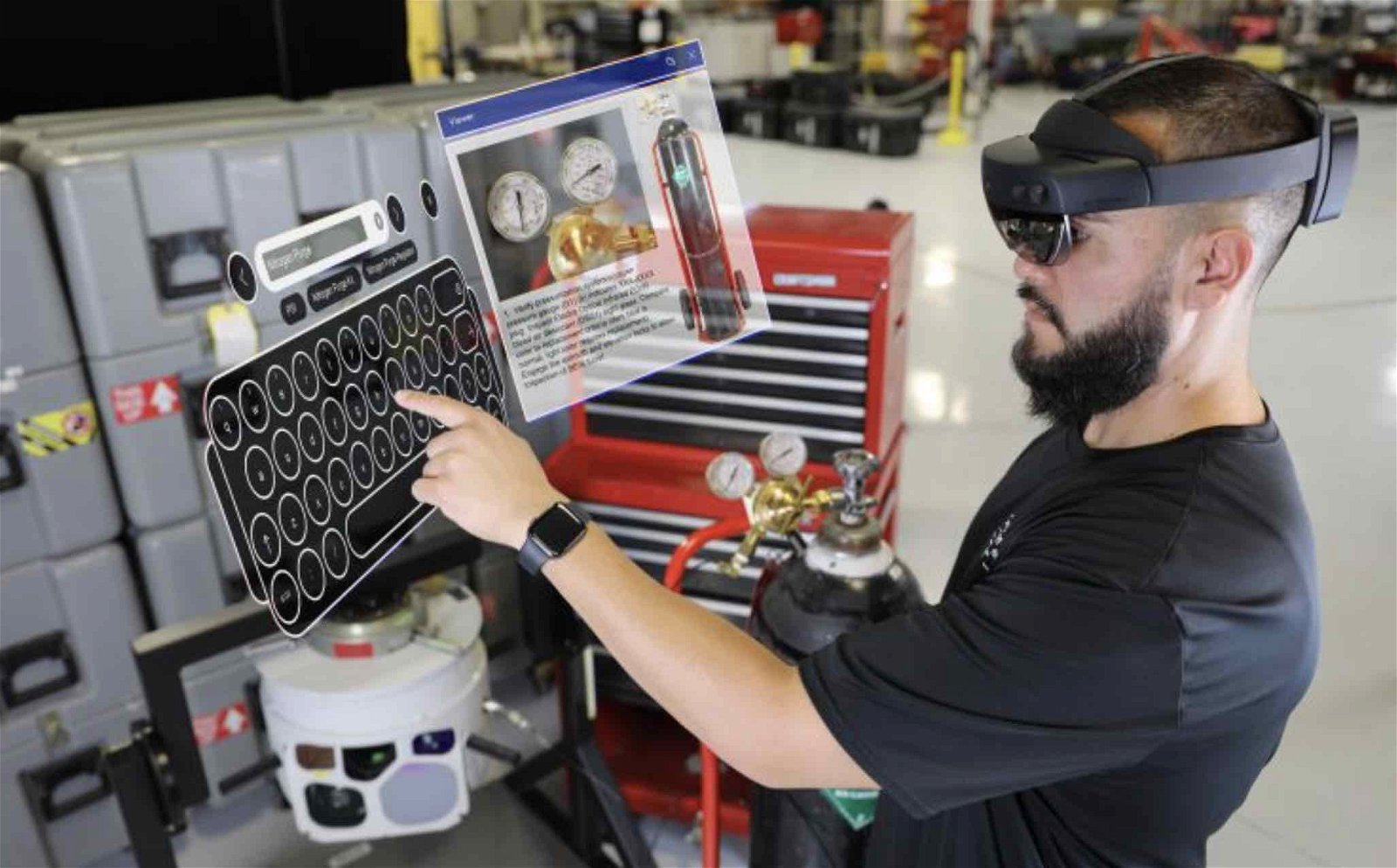A new system that facilitates the secure transmission of sensitive, classified military data at high speeds has been demonstrated, paving the way toward leveraging digital capabilities that could transform traditional flightline maintenance.
The technology demonstration, which is called “Flightline of the Future,” is the result of a new collaboration between Northrup Grumman and its partners at AT&T and Secure EMP-Resilient Edge (SEMPRE), a provider of low-latency EMP-hardened digital solutions. The new system could fundamentally change how classified information is shared across geographies, in addition to allowing significant reductions in the amount of time required for aircraft maintenance and repair and other tasks.
The aerospace and defense company has successfully made its new secure communications capabilities “into a commercially available augmented reality (AR) headset worn by an aircraft maintainer” which is capable of relaying classified aircraft information in large volumes, securely carried across a SEMPRE 5G private network and AT&T’s 5G commercial network.
The data transfers were successfully carried between Northrop Grumman’s facilities in Palmdale, California, and in San Diego to Whiteman Air Force Base in Missouri.
Introducing Flightline of the Future
Jenna Paukstis, vice president and general manager for Northrup Grumman’s networked information solutions, says that the capability this new technology provides will allow for fast troubleshooting of both aircraft and land vehicles under pressing combat situations.
“The ‘Flightline of the Future’ is a next-generation digital solution providing U.S. forces with the capability to securely access information and subject matter experts right on the flightline to repair assets with speed and accuracy,” Paukstis said in a statement, “reducing costs and increasing fleet readiness.”
Northrup Grumman recently detailed how its new system will allow a secure communication system that will connect subject matter experts to those involved in aircraft and other vehicular upkeep under combat conditions, allowing them to engage in upgrades, repairs, and maintenance that was previously impossible outside of work carried out in secure locations.
By combining commercially available augmented reality (AR) headsets with both commercial and private 5G networks, Flightline of the Future will reportedly outperform other existing military capabilities while making the transmission of sensitive data accessible to virtually any domain.
“We showcased how our commercial 5G wireless network combined with private networking services can transport and protect both Highly Classified Information and Controlled Unclassified Information and provide the U.S. Department of Defense the networking foundation it needs for private mission use cases,” says Lance Spencer, AT&T’s client executive vice president for defense.
Spencer says the Flightline of the Future can offer the best combination of speed, security, and functionality that the Department of Defense is currently working to incorporate into all its military operations, as part of its ongoing modernization efforts.
“This demonstration proves advanced capabilities will be available to DoD units for deployed and in garrison requirements,” said Dr. Rob Spalding, chief executive officer at SEMPRE.
Spalding and his team’s deployable infrastructure specially designed by SEMPRE will aid their partners in delivering “hardened connectivity and compute capability to the warfighter, even when the connection to the cloud is no longer available.”
Additional information about the new Flightline of the Future system can be found online at Northrup Grumman’s website.
Micah Hanks is the Editor-in-Chief and Co-Founder of The Debrief. He can be reached by email at micah@thedebrief.org. Follow his work at micahhanks.com and on X: @MicahHanks.

